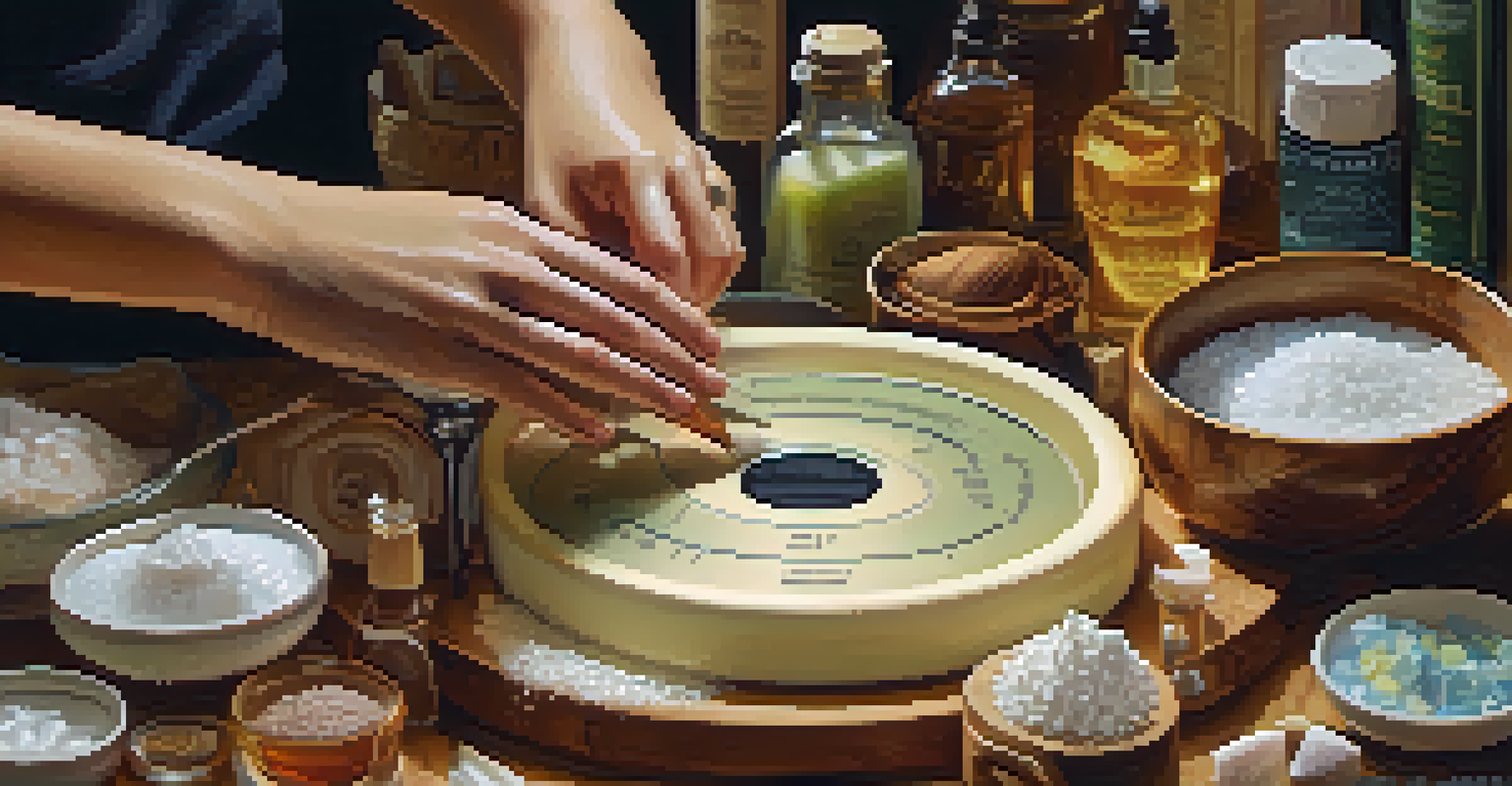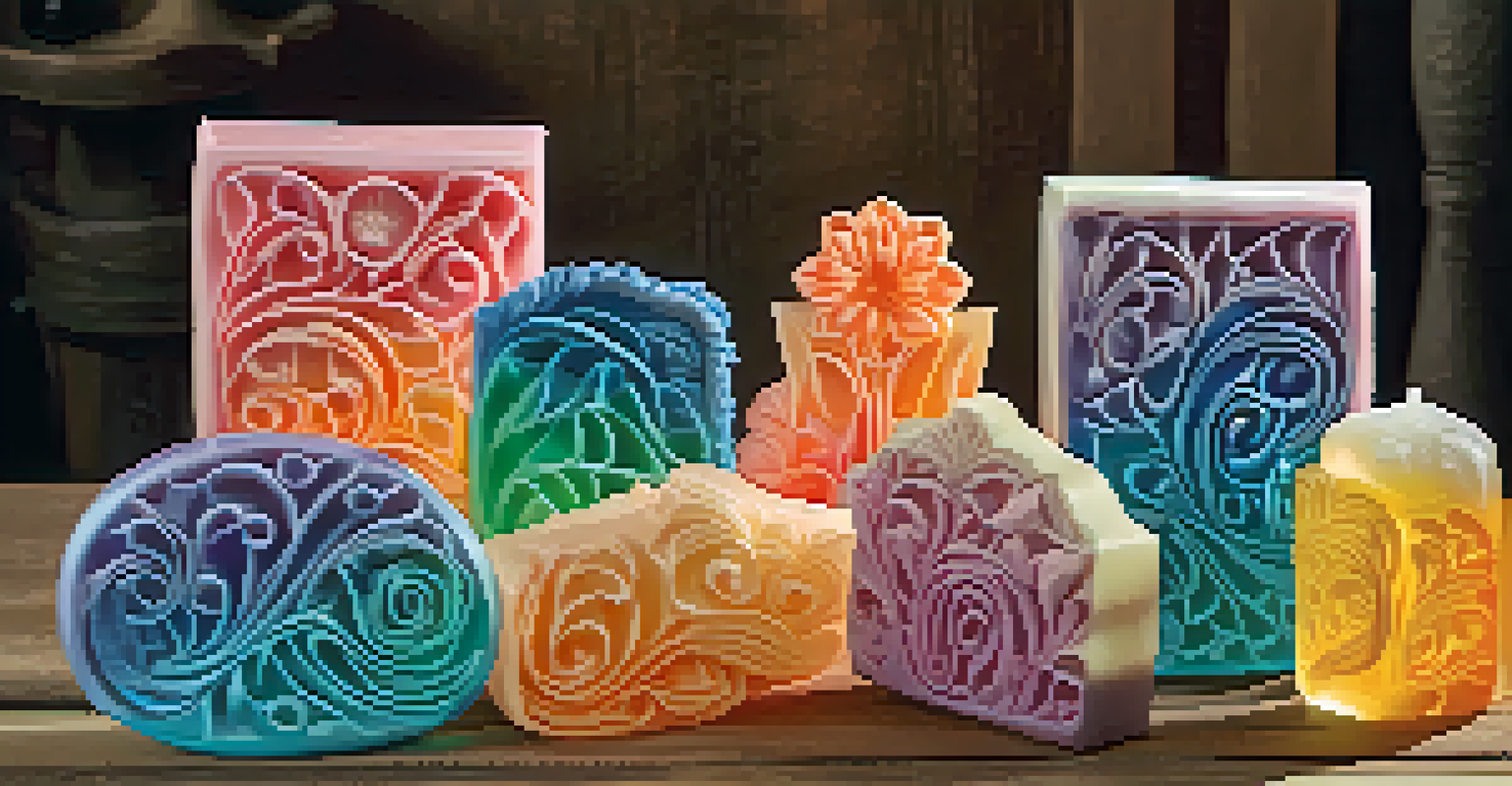Common Mistakes in Soap Sculpting and How to Avoid Them

Neglecting Proper Safety Measures in Soap Sculpting
Soap sculpting can be a fun and rewarding craft, but safety should always come first. Many beginners overlook essential safety measures, such as wearing gloves and goggles when handling lye. This can lead to injuries that could easily be avoided with a little preparation and awareness.
Art is not freedom from discipline, but disciplined freedom.
Always remember that lye is a caustic substance that can cause serious burns or irritation. By taking the time to understand the materials you're working with, you can ensure a safer crafting experience. Safety should never be an afterthought; it's the foundation for successful soap sculpting.
Additionally, make sure to work in a well-ventilated area to avoid inhaling any fumes. A little caution goes a long way, and you’ll be able to focus on your creative process without worry.
Overlooking the Importance of Quality Ingredients
Using low-quality ingredients can significantly impact the final outcome of your soap sculptures. It might be tempting to cut costs by choosing cheaper oils or fragrances, but this often leads to disappointing results. Quality ingredients not only enhance the appearance of your sculptures but also improve their texture and scent.

Investing in good-quality soap bases and additives can make a world of difference. Think of it like cooking; using fresh, high-quality ingredients will elevate your dish, while poor-quality ones can ruin it. The same principle applies to soap sculpting.
Prioritize Safety Measures
Always wear gloves and goggles when handling lye to prevent injuries while soap sculpting.
By sourcing your ingredients from reputable suppliers, you ensure that your sculptures not only look great but also feel wonderful on the skin. So, don’t skimp on quality—your sculptures deserve the best!
Ignoring the Importance of Proper Measurements
One common mistake in soap sculpting is neglecting to measure ingredients accurately. Soap making is a science, and even a slight variation in measurements can lead to unexpected results. For instance, using too much lye can cause your soap to become harsh and unusable.
Mistakes are a fact of life. It is the response to the error that counts.
To avoid this pitfall, always use a digital scale for precise measurements. Think of it like baking; just as you wouldn't eyeball the flour for a cake, you shouldn't guess your soap ingredients. Consistency is key to achieving the desired outcome.
Taking the time to measure accurately not only helps in creating beautiful soap sculptures but also ensures that your creations are safe and effective. Precision may seem tedious, but it pays off in the end!
Rushing the Curing Process Can Ruin Your Sculptures
Patience is a virtue in soap sculpting, and rushing the curing process can lead to disappointing results. Many beginners are eager to see their creations come to life and may remove their sculptures from molds too early. This can result in soft or misshapen soaps that don’t hold up well.
Curing is a crucial step that allows the soap to harden properly and develop its full potential. Think of it like letting a cake cool before frosting; if you rush it, the end product may not be as beautiful or tasty. Allowing your soap to cure for the recommended time ensures it reaches its optimal hardness and quality.
Use Quality Ingredients
Investing in high-quality soap bases and additives ensures better results and a more enjoyable crafting experience.
By giving your sculptures the time they need to cure, you’ll be rewarded with firm, well-defined pieces that are ready for use or gifting. Remember, good things come to those who wait!
Not Paying Attention to Design Principles
Soap sculpting is not just about making a functional product; it’s also an art form. A common mistake is ignoring basic design principles, such as balance, contrast, and unity. Without these elements, your sculptures may feel chaotic or unappealing.
Before starting your project, take a moment to plan your design. Sketching out your ideas can help you visualize the final piece and ensure that all elements work harmoniously together. Think of it like decorating a room; a well-thought-out design creates a more inviting atmosphere.
By applying design principles to your soap sculptures, you can elevate your work from simple crafts to stunning art pieces. Your attention to detail will shine through and impress anyone who sees your creations.
Failing to Experiment with Techniques and Styles
One of the joys of soap sculpting is the opportunity to experiment with different techniques and styles. However, many beginners stick to what they know, missing out on the chance to hone their skills and discover new possibilities. Embracing experimentation can lead to exciting and unique creations.
Don't shy away from trying new methods, whether it's layering colors, incorporating textures, or using different molds. Just as an artist tries various brush strokes to find their signature style, you too can find your unique approach to soap sculpting.
Embrace Feedback and Learning
Seeking constructive criticism and advice from others can significantly enhance your skills and creativity in soap sculpting.
Allow yourself the freedom to make mistakes during the learning process. Each attempt will teach you something valuable, and over time, you'll develop a style that’s distinctly yours. Remember, creativity thrives in an environment where experimentation is encouraged!
Disregarding Feedback and Learning Opportunities
In the world of soap sculpting, feedback is an invaluable tool for growth. However, many sculptors, especially beginners, may disregard constructive criticism or shy away from asking for advice. Embracing feedback can help you identify areas for improvement and refine your skills.
Consider joining online forums or local crafting groups where you can share your work and receive input from others. Think of it like a book club; discussing your creations with fellow enthusiasts can open your eyes to new perspectives and techniques.

By actively seeking feedback and being open to learning from others, you’ll not only improve your sculpting skills but also build a supportive community around your passion. Remember, every artist was once a beginner, and growth comes from learning together!